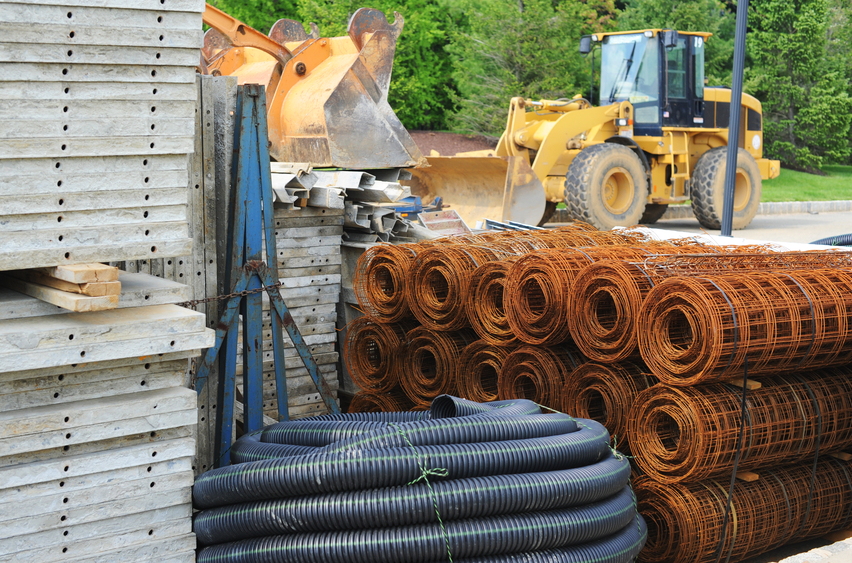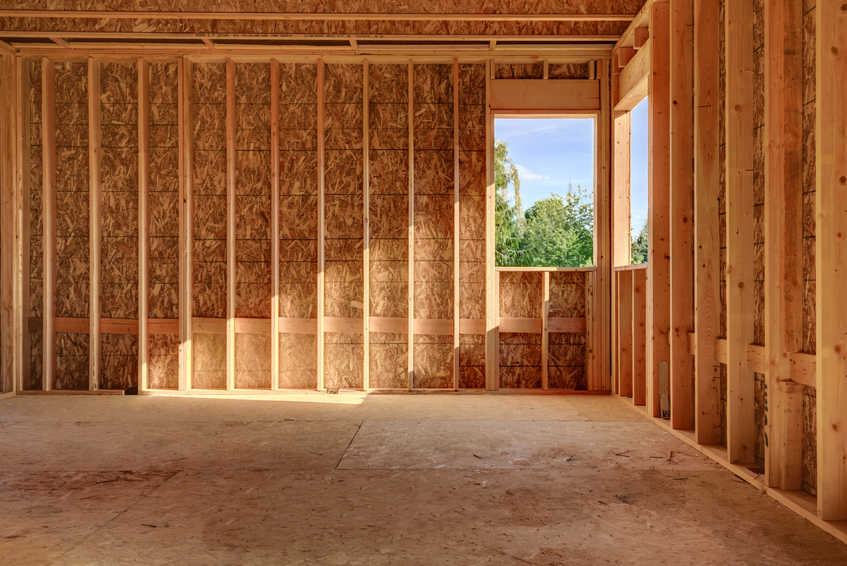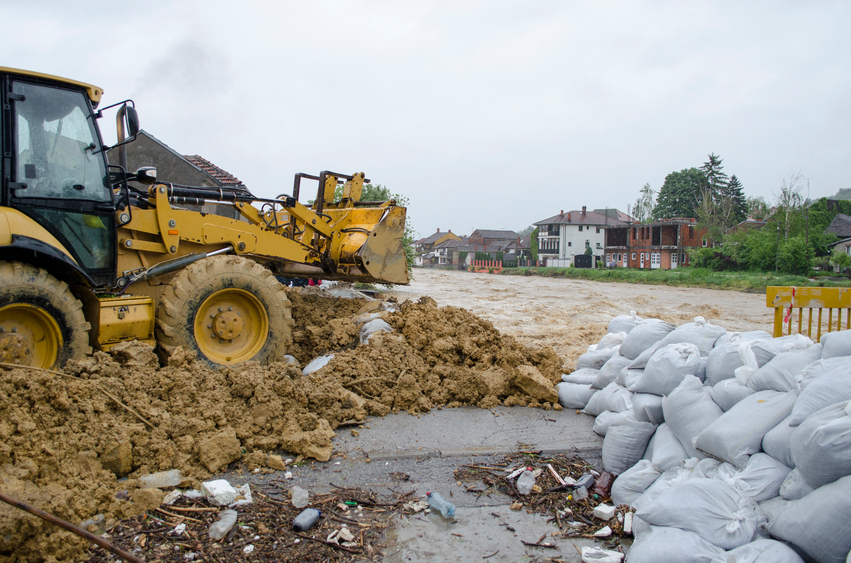Structural Engineering 30 PDH Discount Package 2
Courses in this Package
Wood-based Composites and Panel Products (T03-004)
Wood as an Engineering Material: Use of Wood in Buildings and Bridges (S02-025)
Wood as An Engineering Material: Structure and Function of Wood (S02-021)
Wood as An Engineering Material: Fire Safety of Wood Construction (S02-020)
Wood as An Engineering Material: Fastenings (S03-019)
Wood as An Engineering Material: Wood as a Sustainable Building Material (S01-005)
Wood as An Engineering Material: Mechanical Properties of Wood (S04-019)
Wood as An Engineering Material: Adhesives with Wood Materials (S03-020)
Wet Floodproofing Requirements (S02-014)
Substantially Improved/Substantially Damaged Buildings (S02-026)
Structural Design Criteria for Raised Floor Systems (S04-013)
Design of Commercial/Industrial Guardrail Systems for Fall Protection (S02-016)

This online engineering PDH course is intended to provide an understanding of the different types of wood-based composites and panel products and the different processing considerations for these products.
Wood properties vary greatly among species, between trees of the same species, and between pieces from the same tree. Because of this variation, solid wood cannot match reconstituted wood in the range of properties that can be controlled in processing.
This 3 PDH online course is applicable to structural engineers, design and construction professionals, and other technical personnel who are interested in gaining a better understanding of wood-based composites and product panels.
This PE continuing education course is intended to provide you with the following specific knowledge and skills:
- Understanding adhesive considerations
- Understanding plywood processing and manufacturing considerations
- Learning about particle and fiber composites
- Learning about wood-nonwood composites
In this professional engineering CEU course, you need to review Chapter 10, Wood-based Composites and Panel Products of the General Technical Report FPL-GTR-113, "Wood Handbook - Wood as an Engineering Material" published by the Forest Products Laboratory, USDA Forest Service (issued March 1999).
Upon successful completion of the quiz, print your Certificate of Completion instantly. (Note: if you are paying by check or money order, you will be able to print it after we receive your payment.) For your convenience, we will also email it to you. Please note that you can log in to your account at any time to access and print your Certificate of Completion.

This online engineering PDH course describes the features of various types of building systems. It places emphasis on how these systems have adapted to the use of modern materials and techniques.
In North America, most housing and commercial structures built prior to the 20th century used wood as the major structural material. The abundant wood resource formed the basic structure for most houses, commercial buildings, bridges, and utility poles. Today, houses and many light commercial and industrial buildings are made using modern wood structural materials. Recently, there has been increased interest in using wood for various types of transportation structures, including highway bridges. Furthermore, prefabricated floor and wall panels along with prefabricated roof and floor trusses or I-joists are replacing piece-by-piece on-site construction with dimension lumber.
This 2 PDH online course is applicable to civil, structural or geotechnical engineers, as well as design and construction personnel who are interested in gaining a better understanding in use of wood in buildings and bridges.
This PE continuing education course is intended to provide you with the following specific knowledge and skills:
- Understanding of light-frame building type construction
- Understanding of post-frame and pole building type construction
- Understanding of log and heavy timber building type construction
- Understanding of timber bridge type construction
- Application of thermal insulation controls, air filtration controls, moisture and sound controls to the construction of wood structures
Upon successful completion of the quiz, print your Certificate of Completion instantly. (Note: if you are paying by check or money order, you will be able to print it after we receive your payment.) For your convenience, we will also email it to you. Please note that you can log in to your account at any time to access and print your Certificate of Completion.

This online engineering PDH course provides guidance on the basic biological structure of wood and provides a basis for interpreting its properties in an engineering context. By understanding the function of wood in the living tree, we can better understand the strengths and limitations it presents as a material.
Wood is a complex biological structure, a composite of many chemistries and cell types acting together to serve the needs of a living plant. Attempting to understand wood in the context of wood technology, we have often overlooked the key and basic fact that wood evolved over the course of millions of years to serve three main functions in plants― conduction of water from the roots to the leaves, mechanical support of the plant body, and storage of biochemicals. There is no property of wood—physical, mechanical, chemical, biological, or technological—that is not fundamentally derived from the fact that wood is formed to meet the needs of the living tree. To accomplish any of these functions, wood must have cells that are designed and interconnected in ways sufficient to perform these functions. These three functions have influenced the evolution of approximately 20,000 different species of woody plants, each with unique properties, uses, and capabilities, in both plant and human contexts.
This 2 PDH online course is applicable to civil, structural or geotechnical engineers, as well as design and construction personnel who are interested in gaining a better understanding of the structures and functions of wood or who are involved in the design and planning of wood structures.
This PE continuing education course is intended to provide you with the following specific knowledge and skills:
- Learning the biological structure of wood
- Understanding the microscopic structure of softwoods and hardwoods
- Familiarizing with the different appearances of wood as sawn lumber
- Understanding the differences between plainsawn and quartersawn lumber
Upon successful completion of the quiz, print your Certificate of Completion instantly. (Note: if you are paying by check or money order, you will be able to print it after we receive your payment.) For your convenience, we will also email it to you. Please note that you can log in to your account at any time to access and print your Certificate of Completion.

This online engineering PDH course discusses the fire safety code requirements along with the related fire performance data of wood in construction and provides information on fire behavior and fire performance characteristics of wood products.
Fire safety is an important concern in all types of construction. The high level of national concern for fire safety is reflected in limitations and design requirements in building codes. These code requirements and related fire performance data are discussed in the context of fire safety design and evaluation in the initial section of this course. Because basic data on fire behavior of wood products are needed to evaluate fire safety for wood construction, the second major section of this course provides additional information on fire behavior and fire performance characteristics of wood products. The course concludes with a discussion of fire-retardant treatments that can be used to reduce the combustibility of wood.
This 2 PDH online course is applicable to civil, structural or geotechnical engineers, as well as design and construction personnel who are interested in gaining a better understanding in fire safety of wood construction or who are involved in the design and planning of wood structures.
This PE continuing education course is intended to provide you with the following specific knowledge and skills:
- Familiarizing with the fire safety design and evaluation process of wood in construction
- Understanding the different fire safety code requirements and regulations
- Understanding the different fire-performance characteristic of wood
- Learning the characteristics and benefits of fire-retardant treated wood
Upon successful completion of the quiz, print your Certificate of Completion instantly. (Note: if you are paying by check or money order, you will be able to print it after we receive your payment.) For your convenience, we will also email it to you. Please note that you can log in to your account at any time to access and print your Certificate of Completion.

This online engineering PDH course provides guidance on joint designs required for wood fastenings for utmost rigidity, strength, and service. It discusses each type of fastening requiring joint designs adapted to the strength properties of wood along and across the grain and to dimensional changes that may occur with changes in moisture content.
The strength and stability of any structure depend heavily on the fastenings that hold its parts together. One prime advantage of wood as a structural material is the ease with which wood structural parts can be joined together with a wide variety of fastenings such as nails, spikes, screws, bolts, lag screws, drift pins, staples and metal connectors of various types.
This 3 PDH online course is applicable to civil, structural or geotechnical engineers, as well as design and construction personnel who are interested in gaining a better understanding in wood fastenings or who are involved in the design and planning of wood structures.
This PE continuing education course is intended to provide you with the following specific knowledge and skills:
- Learning about the various types of mechanical fastenings
- Understanding the withdrawal and lateral resistance properties for different types of fasteners
- Learning about joint designs required for wood fastenings including spacing, edge and end distances
- Understanding the effect of fastenings on wood joint properties including bearing stress
- Understanding the different types of loading (parallel-to-grain, perpendicular-to-grain, and angle loading)
- Learning about two-member joints versus multiple-member joints
Upon successful completion of the quiz, print your Certificate of Completion instantly. (Note: if you are paying by check or money order, you will be able to print it after we receive your payment.) For your convenience, we will also email it to you. Please note that you can log in to your account at any time to access and print your Certificate of Completion.

This online engineering PDH course illustrates how wood is considered as a sustainable building material.
Few building materials possess the environmental benefits of wood. It is not only the most widely used building material but also one with characteristics that make it suitable for a wide range of applications.One of the greatest attributes of wood is that it is a renewable resource. If sustainable forest management and harvesting practices are followed, wood resources will be available indefinitely.
This 1 PDH online course is applicable to civil, structural or geotechnical engineers, as well as design and construction personnel who are interested in gaining a better understanding in wood as a sustainable building material or who are involved in the design and planning of wood structures.
This PE continuing education course is intended to provide you with the following specific knowledge and skills:
- Learning how wood is considered aGreen Building Material
- Understanding the concept of Embodied Energy
- Learning the Carbon Impact of different materials
- Familiarizing with the different Forest Certification Programs
Upon successful completion of the quiz, print your Certificate of Completion instantly. (Note: if you are paying by check or money order, you will be able to print it after we receive your payment.) For your convenience, we will also email it to you. Please note that you can log in to your account at any time to access and print your Certificate of Completion.

This online engineering PDH course provides information on the most recent research on properties of the wood cell wall at the nanoscale level. It discusses the mechanical properties of wood, the nature and magnitude of variability in its properties as well as the effect of growth features.
Many of the mechanical properties of wood tabulated in this course were derived from extensive sampling and analysis procedures. These properties are represented as the average mechanical properties of the species. Some properties, such as tension parallel to the grain, and all properties for some imported species are based on a more limited number of specimens that were not subjected to the same sampling and analysis procedures. The appropriateness of these latter properties to represent the average properties of a species is uncertain; nevertheless, the properties represent the best information available.
This 4 PDH online course is applicable to civil, structural or geotechnical engineers, as well as design and construction personnel who are interested in gaining a better understanding in the mechanical properties of wood or who are involved in the design and planning of wood structures.
This PE continuing education course is intended to provide you with the following specific knowledge and skills:
- Understanding the orthotropic nature of wood
- Familiarizing with the elastic, strength, and vibration properties of wood
- Understanding the mechanical properties of clear straight-grained wood
- Learning the different natural characteristics affecting mechanical properties of wood
Upon successful completion of the quiz, print your Certificate of Completion instantly. (Note: if you are paying by check or money order, you will be able to print it after we receive your payment.) For your convenience, we will also email it to you. Please note that you can log in to your account at any time to access and print your Certificate of Completion.

This online engineering PDH course presents the types of adhesives and their properties, bonding processes, bonded joints, testing and performance. It discusses how adhesives can effectively transfer and distribute stresses, thereby increasing the strength and stiffness of the composite.
Adhesive bonding of wood plays an increasing role in the forest products industry and is a key factor for efficiently utilizing our timber resource. The main use of adhesives is in the manufacture of building materials, including plywood, oriented strandboard, particleboard, fiberboard, structural composite lumber, doors, windows and frames, and factory-laminated wood products. Adhesives are also used in the assembly of furniture and cabinets, manufacture of engineered wood products, and construction of residential and commercial structures.
This 3 PDH online course is applicable to civil, structural or geotechnical engineers, as well as design and construction personnel who are interested in gaining a better understanding in adhesive bonding of wood materials.
This PE continuing education course is intended to provide you with the following specific knowledge and skills:
- Understanding the physical properties of wood for bonding
- Learning about the different types of adhesives and their composition, strength, durability and selection
- Understanding the bonding process
- Learning about the various types of bonded joints
- Understanding the testing methods and performance of polymers and bonded assemblies
In this professional engineering CEU course, you need to review Chapter 10, "Adhesives with Wood Materials" of the United States Department of Agriculture (USDA) Publication, “Wood Handbook - Wood as An Engineering Material”, FPL-GTR-190.
Upon successful completion of the quiz, print your Certificate of Completion instantly. (Note: if you are paying by check or money order, you will be able to print it after we receive your payment.) For your convenience, we will also email it to you. Please note that you can log in to your account at any time to access and print your Certificate of Completion.

This online engineering PDH course provides guidance for the design, selection, and review of wet floodproofed structures.
The national flood insurance program (NFIP) has a primary goal of protecting buildings from flood damage. In order to meet this goal, the federal emergency management agency (FEMA) has specific design requirements for new construction, as well as substantially damaged or substantially improved structures within special flood hazard areas. One potential way to minimize flood damage to certain types of structures is the proper use of wet floodproofing.
FEMA has established a methodology to evaluate and select when wet floodproofing may be utilized and design criteria that will lower a buildings vulnerability to flood damage when inundated by flood waters. Flood resistant materials are used to reduce damages resulting from prolonged contact of flood waters. All building materials that are below the base flood must meet certain criteria in order to be in compliance with the NFIP.
This 2 PDH online course is intended for practicing civil, structural and geotechnical engineers, contractors, developers, governmental agencies, regulators, and all other personnel involved with the design, installation, and maintenance of wet floodproofing materials.
This PE continuing education course is intended to provide you with the following specific knowledge and skills:
- Familiarizing with the requirements of wet floodproofing
- Learning about the situations where wet floodproofing may be utilized
- Understanding the flood insurance implications of wet floodproofing
- Identifying and selecting building components that are properly wet floodproofed
In this professional engineering CEU course, you need to review FEMA Publication titled, "Wet Floodproofing Requirements" (Technical Bulletin 7, December 1993).
Upon successful completion of the quiz, print your Certificate of Completion instantly. (Note: if you are paying by check or money order, you will be able to print it after we receive your payment.) For your convenience, we will also email it to you. Please note that you can log in to your account at any time to access and print your Certificate of Completion.

This online engineering PDH course outlines many of the ways to determine if a building has been substantially damaged or substantially improved. This course also outlines how to determine the cost of improvements/repairs in difficult situations such as dealing with donated materials and labor.
The national flood insurance program (NFIP) has a primary goal of protecting buildings from flood damage. In order to meet this goal, the federal emergency management agency (FEMA) has specific design requirements for new construction, as well as substantially damaged or substantially improved structures within special flood hazard areas. FEMA has set requirements meant to balance the needs for maintaining and improving existing structures while managing the risk associated with allowing improvements in the floodplain. FEMA has established a methodology to evaluate when improvements to buildings trigger the requirement to bring the entire structure into compliance with all requirements of the NFIP. FEMA requires that the value of the structure and improvements be calculated in an equitable consistent manner.
This 2 PDH online course is intended for practicing civil, structural and geotechnical engineers, contractors, developers, governmental agencies, regulators, and all other personnel involved with the permitting, design, and approval of improvements to structures in the floodplain.
This PE continuing education course is intended to provide you with the following specific knowledge and skills:
- Knowing why the substantial damage threshold has been set at 50%
- Learning how to calculate the value of a structure and the cost of improvements
- Understanding how substantial damage requirements are used in a disaster
Upon successful completion of the quiz, print your Certificate of Completion instantly. (Note: if you are paying by check or money order, you will be able to print it after we receive your payment.) For your convenience, we will also email it to you. Please note that you can log in to your account at any time to access and print your Certificate of Completion.

This online engineering PDH course presents the structural design criteria for raised floor systems. A raised floor system is an assembly of beams, girders, joists, and sheathing panels comprised of various engineered wood framing products, all properly sized and connected together. A raised floor system is designed to elevate the living space of a structure off the ground, isolating it from moisture and pests.
The flexibility of a raised floor system provides several advantages during the construction phase. For example, a raised floor system constructed on a pier-and-beam foundation is less disruptive to the natural surroundings than a slab-on-grade foundation. Another advantage is in regards to flooding. A raised floor system provides a practical and affordable solution to building code requirements in flood-prone areas.
This 4 PDH online course is applicable to structural engineers, design and construction professionals, and other technical personnel who are interested in gaining a better understanding of the structural design criteria for raised floor systems.
This PE continuing education course is intended to provide you with the following specific knowledge and skills:
- Understanding the advantages of using raised floor systems
- Learning about the different type of footings and foundations used in raised floor construction
- Familiarizing with soil considerations
- Learning about moisture and pest control
- Understanding the different framing details for raised floor construction
In this professional engineering CEU course, you need to review the Southern Pine Council's publication titled: "Raised Floor Systems - Design and Construction Guide" (2004). The referenced document is reproduced by permission of the Southern Pine Council.
Upon successful completion of the quiz, print your Certificate of Completion instantly. (Note: if you are paying by check or money order, you will be able to print it after we receive your payment.) For your convenience, we will also email it to you. Please note that you can log in to your account at any time to access and print your Certificate of Completion.

This online engineering PDH course will introduce you to the principles of designing or evaluating guardrail systems in commercial/industrial applications for fall protection. Whether in construction or general industry, a structural engineer may be called upon to design a new guardrail system or to evaluate the adequacy of an existing guardrail system in accordance with the codes of the local jurisdiction. The design of a simple guardrail system has become more complicated as there is no single guardrail design that will work for all situations. There are different functional Code requirements depending upon the local jurisdiction and the design engineer must interpret the latest version of these regulations and Codes and apply them to specific applications.
This course provides a procedure for designing or evaluating guardrail systems in commercial/industrial applications. A selection of published methods, tables and charts from industry manuals, manufacturer's engineering data, and codes are provided as a source of design information and criteria for guardrail systems. This course includes a design example for better understanding of the subject matter.
This 2 PDH online course is intended for all engineers, architects and construction professionals who are interested in gaining a better understanding of guardrail systems, their Code requirements, and how they are designed.
This PE continuing education course is intended to provide you with the following specific knowledge and skills:
- Understanding the code requirements for guardrail systems in commercial/industrial applications for fall protection
- Selecting guardrail elements based upon material and physical properties as well as environmental conditions
- Understanding load, stress and deflection relationships for guardrail systems
- Designing of posts under uniform and concentrated loading
- Designing of rails under uniform and concentrated loading
- Designing anchorage/fasteners for the base of the post
In this professional engineering CEU course you will need to review the course document titled "Design of Commercial/Industrial Guardrail Systems for Fall Protection".
Upon successful completion of the quiz, print your Certificate of Completion instantly. (Note: if you are paying by check or money order, you will be able to print it after we receive your payment.) For your convenience, we will also email it to you. Please note that you can log in to your account at any time to access and print your Certificate of Completion.